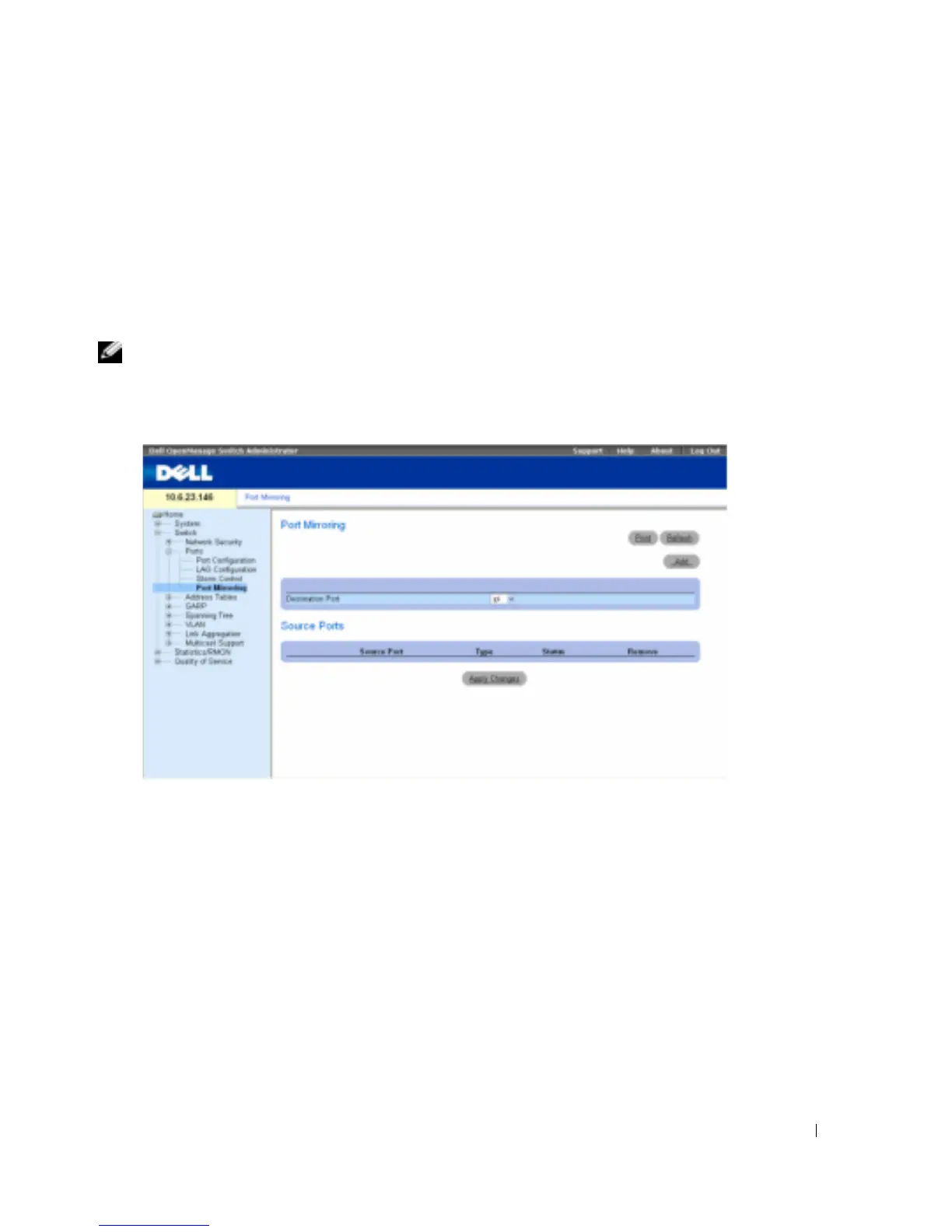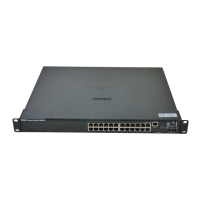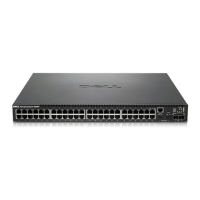Configuring Device Information 229
The following restrictions apply to ports configured to be source ports:
• Source Ports cannot be a LAG member.
• Ports cannot be configured as a destination port.
• All packets are transmitted tagged from the destination port.
• Monitored all RX/TX packets to the same port.
To open the
Port Mirroring
page, click
Switch
→
Ports
→
Port Mirroring
in the tree view.
NOTE: When a port is set to be a target port for a port-mirroring session, all normal operations on it are
suspended. This includes Spanning Tree and LACP.
Figure 7-94. Port Mirroring
Destination Port
— The port number to which port traffic is copied.
Source Port
— Defines the port number from which port traffic is mirrored.
Ty p e
— Indicates if the source port is RX, TX, or both RX and TX.
Status
— Indicates if the port is currently monitored (
Active
) or not monitored (
Ready
).
Remove
— When selected, removes the port mirroring session.
Adding a Port Mirroring Session
1
Open the
Port Mirroring
page.
2
Click
Add
.
The
Add Source Port
page opens.
3
Select the destination port from the
Destination Port
drop-down menu.

